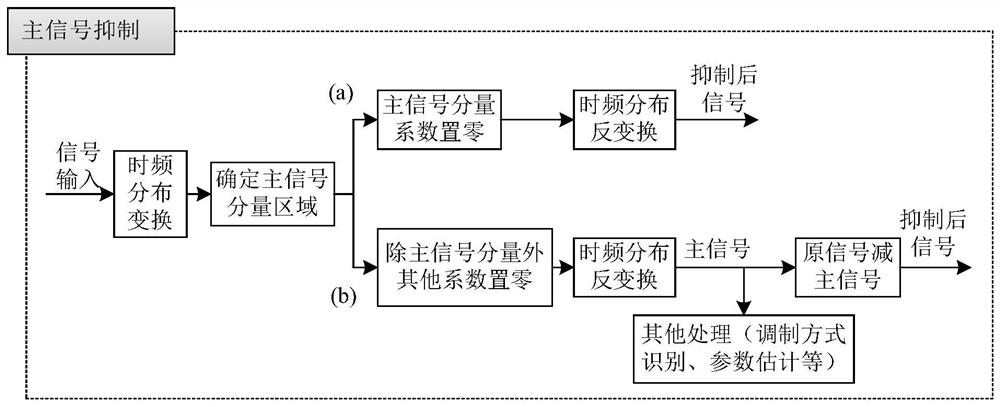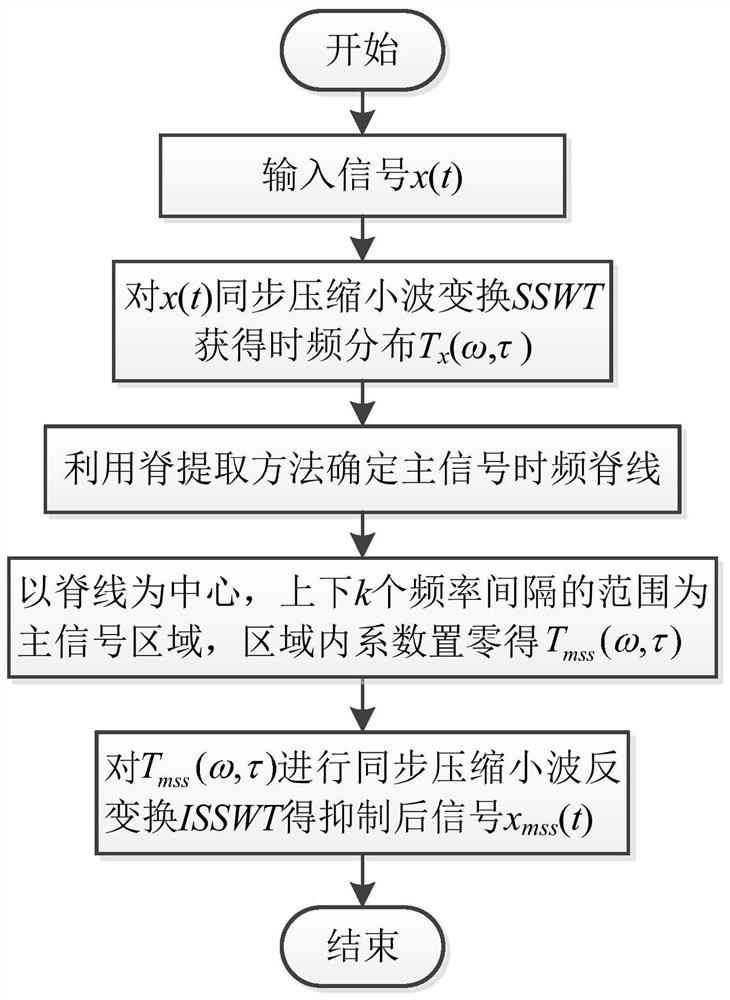Individual Radiation Source Identification Method Based on Main Signal Suppression
An identification method and radiation source technology, which is applied in the field of individual identification of radiation sources, can solve problems such as the influence of individual characteristics, the decline of identification effect, and failure, so as to improve the individual identification rate, improve reliability and robustness, and improve independence and The effect of stability
- Summary
- Abstract
- Description
- Claims
- Application Information
AI Technical Summary
Problems solved by technology
Method used
Image
Examples
specific Embodiment approach 1
[0019] Specific implementation mode one: based on figure 1 To illustrate this embodiment, the specific process of the radiation source individual identification method based on main signal suppression in this embodiment is as follows:
[0020] Step 1, intercepting and preprocessing the radiation source signal to obtain the preprocessed radiation source signal;
[0021] Step 2. Based on the main signal suppression algorithm based on the forward and inverse transformation of time-frequency distribution, the main signal suppression is performed on the radiation source signal preprocessed in step 1, the suppressed signal is obtained, and the signal with a high proportion of individual information is output;
[0022] Step 3, performing individual feature extraction on the signal after the main signal suppression in step 2, and constructing a feature vector;
[0023] Step 4: Input the feature vector constructed in Step 3 into the classifier, and output the classification recognitio...
specific Embodiment approach 2
[0024] Embodiment 2: The difference between this embodiment and Embodiment 1 is that in the first step, the radiation source signal is intercepted and preprocessed to obtain the preprocessed radiation source signal; the specific process is:
[0025] The receiver receives the radiation source signal, sorts and denoises the radiation source signal;
[0026] The radiation source signals were sorted by Pulse Repetition Interval (PRI) transform, and the preprocessed radiation source signals were obtained by static wavelet transform to denoise the sorted radiation source signals.
[0027] Other steps and parameters are the same as those in Embodiment 1.
specific Embodiment approach 3
[0028] Specific embodiment 3: The difference between this embodiment and specific embodiments 1 or 2 is that in the step 2, the main signal suppression algorithm based on the time-frequency distribution forward and reverse transformation is used to main signal the radiation source signal preprocessed in the step 1. Signal suppression, after obtaining the suppressed signal, output a signal with a high proportion of individual information; the specific process is:
[0029] Under the main framework of the radiation source individual identification based on main signal suppression, aiming at the process of main signal suppression, the present invention designs a main signal suppression algorithm based on forward and inverse transformation of time-frequency distribution, according to signal processing needs, it can be obtained from (a) and (b) two options, the process is as follows figure 2 shown. Since the selected time-frequency distribution transformation is generally a linear...
PUM
 Login to View More
Login to View More Abstract
Description
Claims
Application Information
 Login to View More
Login to View More - R&D
- Intellectual Property
- Life Sciences
- Materials
- Tech Scout
- Unparalleled Data Quality
- Higher Quality Content
- 60% Fewer Hallucinations
Browse by: Latest US Patents, China's latest patents, Technical Efficacy Thesaurus, Application Domain, Technology Topic, Popular Technical Reports.
© 2025 PatSnap. All rights reserved.Legal|Privacy policy|Modern Slavery Act Transparency Statement|Sitemap|About US| Contact US: help@patsnap.com



